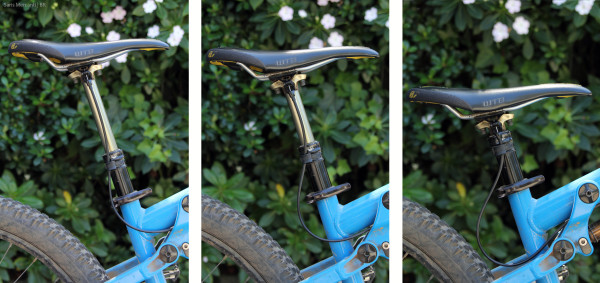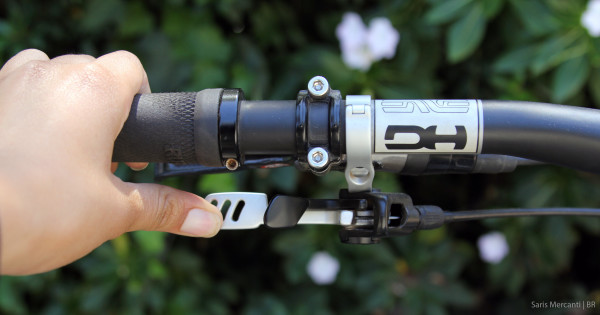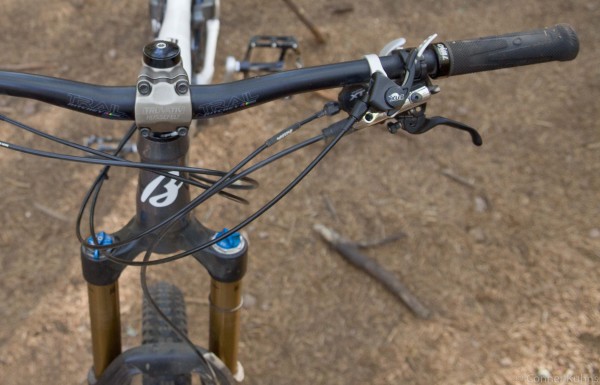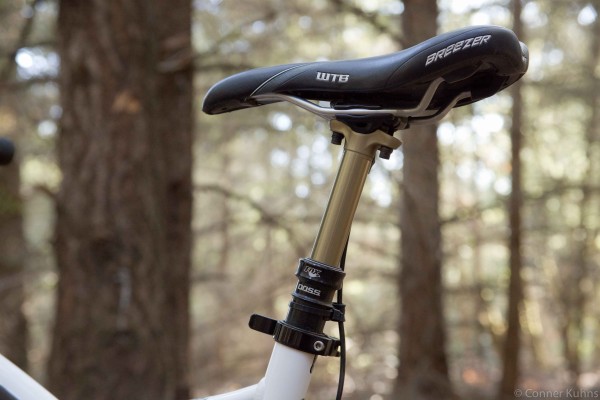 Purchasing a dropper post is arguably the biggest single upgrade you can make to your mountain bike. The ability to drop and raise your saddle on the fly has had a bigger impact on our riding style than any pair of carbon wheels we’ve had the pleasure of testing.
Purchasing a dropper post is arguably the biggest single upgrade you can make to your mountain bike. The ability to drop and raise your saddle on the fly has had a bigger impact on our riding style than any pair of carbon wheels we’ve had the pleasure of testing.
Unfortunately, like all new technology, there have been growing pains. The early dropper posts we tested were sometimes rife with issues ranging from excessive side-to-side play or the need for frequent service intervals. So when Fox set about developing the D.O.S.S. (Drop On Steep Sh!t) Dropper Post, they wanted to address these failures. Their post has now been on the market for nearly two years and we’ve been hammering on two different posts for about that half time.
Have they succeed in building a maintenance free post? Drop past the break to find out….
Weight
Without cables or lever, the dropper post weighed 538 grams.
In the box you’ll find everything you need for set up, including a lengthy roll of cable housing (and cable). We didn’t end up using all of the included housing, so installed weight was probably shy of the 72 grams listed.
The gigantic lever, with speed holes, graced our scale at 57 grams.
Weight weenies, avert your eyes. The total weight for this 5″ 31.6 diameter post was 667 grams or ~ 1.5 lbs. For comparison, the LH Thomson Dropper weighs 586 grams (a full 81 grams lighter), and the Crank Brothers Kronolog weighs 566 grams (which is nearly a quarter pound lighter.)
If you’re turned off by the weight, remember you can always reduce a “significant” amount by switching to lighter bolts and shift housing.
Tech
The Fox post is available in two different sizes and lengths. Both the 30.9 and 31.6mm posts come in 100 and 125mm (4 & 5″) versions.
The dropper has three preset positions, which work in conjunction with Fox’s new suspension compression setting nomenclature – CTD. Climb mode is fully extended, Trail drops the saddle 40mm lower, and Descend mode is fully compressed.
It operates using a mixture of mechanical internals and a low pressure air system. Inside, eight stainless steel balls drop along three different length grooves to each of the preset positions. The lever is actuated using standard shift housing and a derailleur cable, so replacement parts are available at any bike shop in the world. And you can manually actuate the post should you somehow destroy your cable lever while out on the trail.
Ergonomics
On the bike, the Fox lever occupies roughly the same space as a shifter. On bikes set up with a 1x drivetrain, the under-the-bar position worked best, but the lever has provisions for being mounted above or below, and on the left or right side of the handlebar.
The dual lever design also makes it easy to find the middle trail position every-time. When you depress the larger silver paddle, the post compresses fully, but push down on the black paddle and the post only clicks down 40mm.
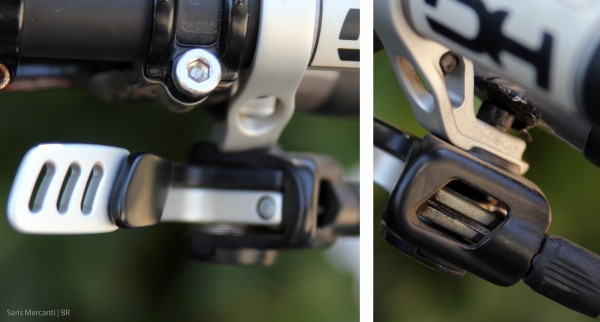
In the parking lot, the lever feels stiff. Particularly if you’ve become spoiled by the smooth action of a hydraulic lever. Once you’re on the trail, the lever actuation feels just right. It doesn’t take too much force to depress and we’ve never accidentally dropped our post.
We’ve been suffering a drought in California over the past two years, so we’ve never had the opportunity to spend much time riding in the mud, but we do have some concerns about the degree to which the cable is exposed to dust and muck at the head of the lever. That said, in nearly a year of riding in some of the dustiest conditions ever, we haven’t had any issues.
On the Trail
On the trail and in the stand, the Fox dropper post feels remarkably solid and well built. Over the course of a few seasons worth of hard riding, we haven’t encountered any of the major issues we have experienced with some other posts. In particular, despite crashing on a 20 foot double and bending a set of seat rails, the post did not develop any excessive side-to-side play. While you can grab the saddle and wiggle it a few millimeters, the play is barely discernible when seated.
Unlike a hyrdaulic post, the D.O.S.S. does not require any force to drop through it’s travel. This is one of the main reasons I favor mechanical droppers. Instead of approaching an obstacle (or beer stop) and having to stand up and bump down the post, you can hold the lever and drop down a few inches effortlessly. When you’re riding for extended periods at your cardiac limit, not having to expend that little extra bit of energy is a relief.
When bumping the post up and down through its travel, there is a satisfying mechanical click each time the post engages. Hit the lever and the saddle is almost instantaneously out of your way. The return spring is just as fast, but doesn’t pack a punch, meaning your man (or woman) hood is safe. We did experiment with adding more and less air pressure in the post to try and adjust the return speed, but found the adjustments made little discernible difference.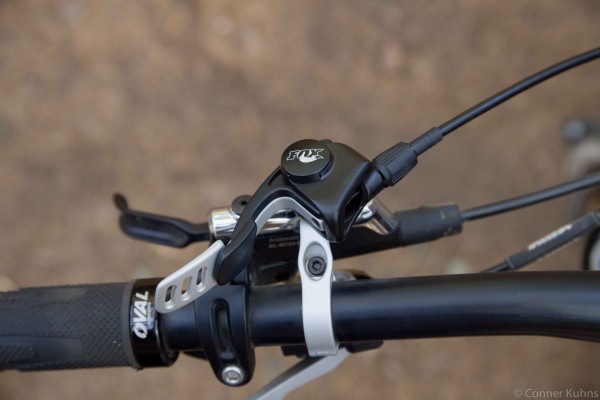
While some riders will steer clear of this dropper because it has three preset positions, I quickly fell in love with the setup. We’ve had several test bikes through our stable with Reverb posts, but I never missed the fully variable positions. The 40mm drop into trail mode is perfect for all but the most spirited riding, and it’s nice knowing exactly how far the post will drop. While the dual lever designs allows you to click down into trail mode securely every time, it’s much easier to find and engage the over-sized silver paddle.
Our one niggling issue was a knocking noise that sometimes emanated from the post when hovering just over the saddle. We’d also like to see a future version with either stealth routing or side mounting on the lower shaft – ala KS LEV.
Overall, the buttery smooth operation of the DOSS post removed any doubts we had regarding the chunky lever. The posts we have in for review feel as solid today as they did when we installed them last year, which is what you should expect from something that retails for $340 USD. If you’re looking for a no nonsense dropper post that won’t leave you stranded, the Fox is well worth considering.



